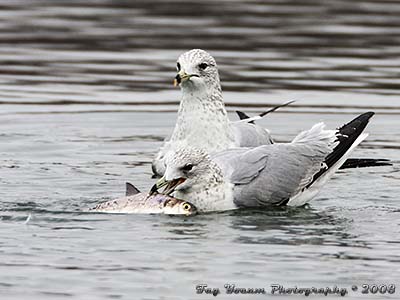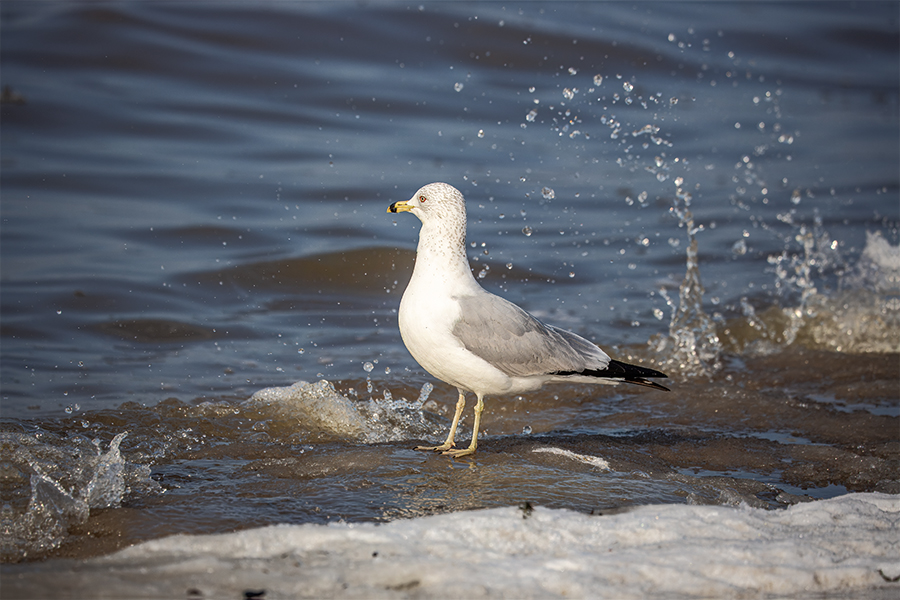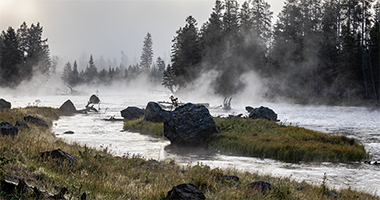Ring-billed Gull


Though often called seagulls, many gulls live in the country's interior regions. The correct term for these birds is just gulls. You can relax. There is no tax on you using the term seagull.
Adult gulls are often white or gray with black markings. Juveniles are usually brown and gray and not as handsome as adults. A young gull may take 1 to 4 years to achieve the distinctive markings of an adult.
They have very loud and harsh wailing or squawking calls. The gulls displayed on this page are all Ring-billed Gulls. Ring-billed Gulls are seen throughout most of North America. They are identified by their yellow bill with a black ring near the front of the bill. There is no red or yellow spot on their bill.
Gulls are omnivores and eat various live or dead animals or vegetation. They will scavenge opportunistically.
Gulls are found in large groups. There are around 50 species of gulls worldwide, including at least 28 species in North America.
Gulls weigh about 4 pounds and are 11.5 to 32 inches tall, depending on the species. Ring-billed Gulls are 18-19 inches tall and weigh 1 pd 5 ounces.
I was always fascinated by how light most birds are even, though they look big.
I will never forget the first time I "really" saw a gull when I was in Rhode Island. It shocked me that the gull came above my knee.

Ring-billed Gulls return to breed at the colony where they hatched most of the time. They will use the same breeding sites yearly, often within feet of their last nest.
















